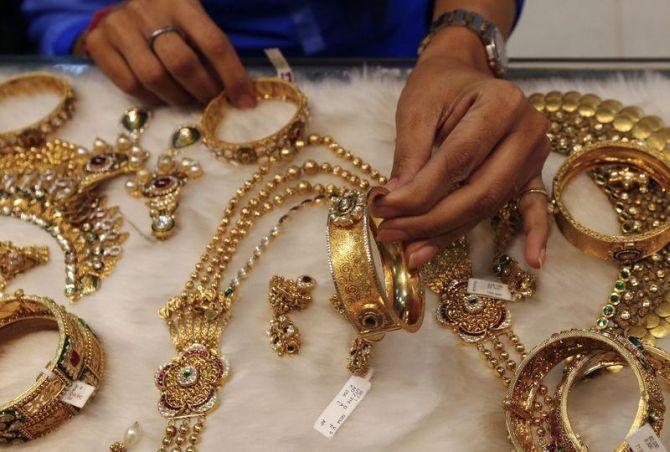Gold loan is currently the fastest-growing loan category (among the various types disbursed to individuals).

On February 26, 2021, the outstanding loan against gold jewellery stood at Rs 56,596 crore. By February 25, 2022, it had risen to Rs 71,408 crore, a year-on-year growth of 26.2 per cent, according to the Reserve Bank of India’s (RBI’s) data.
Several factors are driving the demand for gold loans.
“It is driven largely by the desire to spend on weddings and festivals.
"It is also treated as an emergency loan facility,” says YS Chakravarti, managing director and chief executive officer, Shriram City Union Finance.
Low cost, no questions asked
The low cost of these loans makes them popular.
“The interest rate charged on them is lower than on unsecured loans, like personal loans,” says Adhil Shetty, chief executive officer (CEO), Bankbazaar.
Chakravarti emphasises that these loans are fungible.
There are no restrictions on how the borrower can utilise the money.
“Lenders also don’t penalise borrowers for premature closure,” he adds.
They also don’t ask for the receipt for the gold purchase.
The borrower doesn’t even need a credit score.
“This allows housewives and the elderly to avail of this loan,” says Shetty.
A personal loan requires the borrower to have a decent credit score.
However, the borrower could end up losing their prized jewellery if they fail to repay this loan on time.
“The value of the jewellery is higher than the loan amount.
"It includes making charges and other costs.
"The loan is given only on the value of the gold in the jewellery.
"If the jewellery weighs 100 grams, the gold may be only, say, 90 grams.
"Furthermore, only 75 per cent of the value of gold is given as loan, to comply with the RBI’s loan-to-value (LTV) norm,” says Shetty.
A key risk also arises from the need to pledge additional gold jewellery or cash if the price of gold corrects sharply.
“If a sharp fall leads to the LTV ratio of an existing loan exceeding the 75 per cent regulatory cap, the lender can ask the borrower to deposit cash or pledge more gold as collateral,” says Gaurav Agarwal, senior director, Paisabazaar.com.
He advises that whenever a borrower receives a notice to deposit additional gold or cash, he must make good the difference within the stipulated period.
To avail of this loan, borrowers have to follow certain steps.
“They will have to get the gold evaluated. The amount of gold present in the jewellery will be assessed.
"All this can take some time in the case of some lenders,” says Rishi Mehra, chief executive officer, Wishfin.
Borrow from regulated entity
The lender will keep your gold as collateral throughout the tenure of the loan.
“Go with a lender whose integrity you can be sure of,” says Chakravarti.
While some lenders offer a separate locker (especially if the amount of gold is large), others store your jewellery in sealed boxes.
“You must feel comfortable with the lender’s security practices,” says Mehra.
Take this loan from a bank or a non-banking financial company (NBFC) regulated by the RBI.
“If you opt for a lender from the unorganised sector, the chances of fraud increase.
"Such players also tend to charge higher interest rates,” says Shetty.
Compare interest rates and processing fees.
“Gold loan rates begin from about 7 per cent and can go as high as 27 per cent per annum, so do compare rates,” says Agarwal.
Read the loan agreement. “In particular, understand the time the lender allows before auctioning off your gold, if you default on repayment,” says Mehra.
Match repayment option to cash flow
Some lenders charge a regular equated monthly instalment (EMI).
Some deduct the interest cost from the loan amount and disburse the balance, so that the borrower only has to repay the principal.
Others offer the bullet repayment plan wherein the borrower has to pay the principal and interest amount at the end of the tenure.
“Select an option that suits your cash flow,” says Agarwal.
Salaried persons, for instance, may prefer the EMI option.
A self-employed person, who is going to receive a large payment within three months, may, on the other hand, prefer the bullet payment option.
Do you need the overdraft facility?
Instead of a regular loan, some borrowers may prefer an overdraft facility on their gold loan, which will allow them to avail of revolving credit.
Instead of transferring the loan amount to the borrower’s savings account, the lender opens an overdraft account.
The borrower can withdraw the amount he needs, for the duration for which he requires it.
The OD facility will enable the borrower to save on interest cost.











